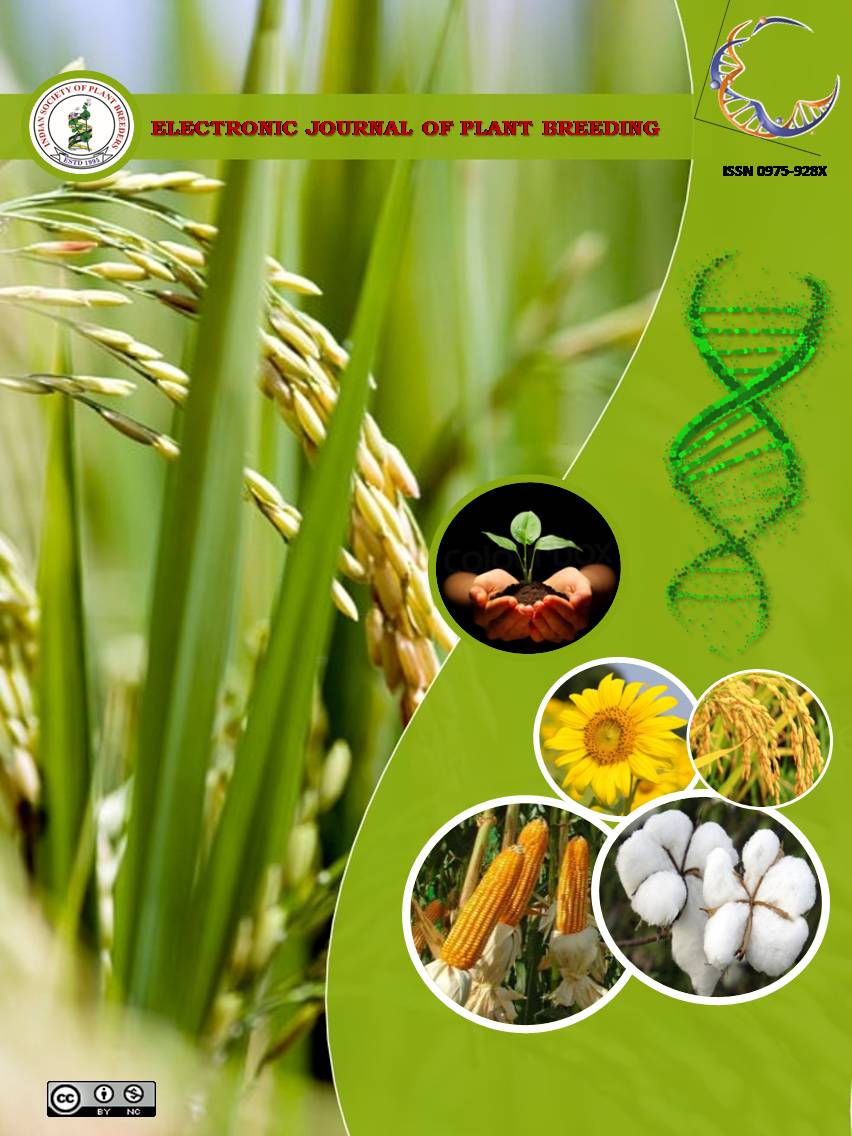Designing model plant architecture through assessment of qualitative and quantitative traits in sesame (Sesamum indicumL.)
Designing model plant architecture in sesame
Abstract
The objective of this research work was to characterize sesame germplasmto generate information on different traits carried by each accessionand to identify novel morphotypes with morphological descriptors desirable for designing model plant architecture.A total of ninety germplasm lines were raised in a randomized block design with three replications and characterized for ninequalitative and thirteen quantitative morphological descriptors.A great variation was observed among sesame germplasm lines for 19 morphologic and agronomic traits while three characters were found to be monomorphic as the plants with indeterminate growth habit, white flower colourand shattering nature. The mean of different qualitative morphotypes for yield and its attributing traits suggested that branched plants forming opposite leaf arrangement and having hairy and tetra carpellated multi capsules per leaf axil with seeds of white colour would be desiredmodel plant architecture in sesame. Similarly, morphological framework of accessions giving the highest and lowest yield as well as pattern of seed yield with high and low level of expression of yield components indicated that higher seed yield per plant, capsules per plant, oil content, harvest index, primary branches per plant and early maturity were desired in model plant. Also noted that, increase in harvest index to the extent of 50 per cent is possible and yield can be increased by improving source-sink balance.These results have an important implication for sesame germplasm characterization and designing model plant architecture.

It is certified that:
- The corresponding author is fully responsible for any disputes arising due to the publication of his/her manuscript.
- The article has been seen by all the authors who are satisfied with its form and content.
- The sequence of names of authors in the by-line is as per their relative contribution to this experiment, giving due credit to all scientists who made notable contribution to it.
- All the authors fully understand that inclusion of any other co-authors or exclusion of any co-authors is not possible once the article has been submitted to the journal.
- The corresponding author takes full responsibility for this article.
- The address of the organization where the research was conducted is given.
- The article is exclusive for this journal, and the results reported here have not been sent (and will not be sent during its consideration by this journal) for publication in any other journal.
- Authors agree to abide by the objective comments of referees and do agree to modify the article into a short note as per the recommendation, for publication in the Electronic Journal of Plant Breeding.
- If published in Electronic Journal of Plant Breeding, the copyright of this article would vest with the Indian Society of Plant Breeders, who will have the right to enter into any agreement with any organization in India or abroad engaged in reprography, photocopying, storage and dissemination of information contained in it, and neither we nor our legal heirs will have any claims on royalty.


